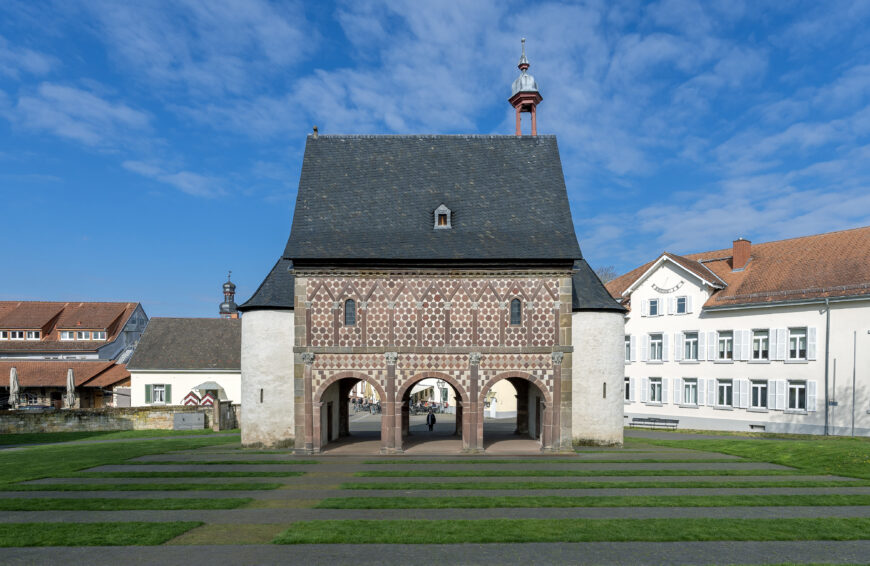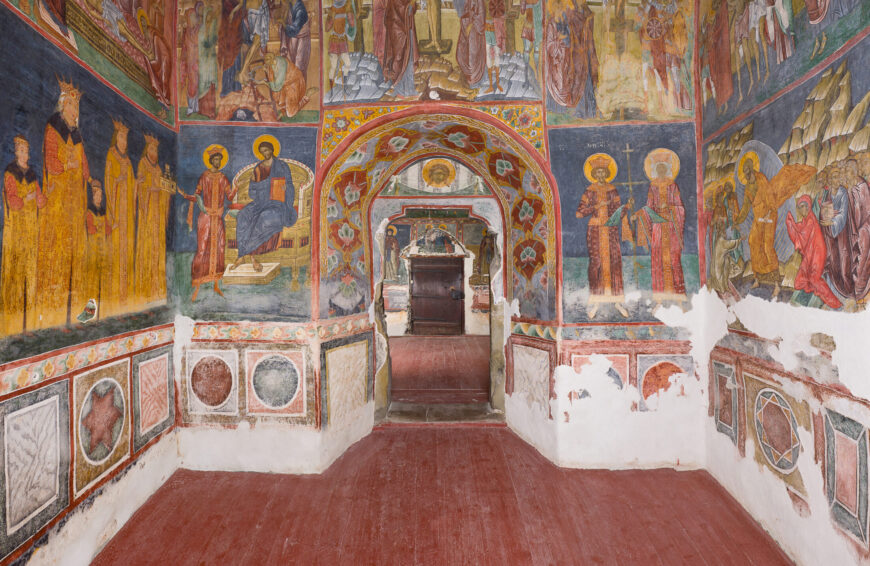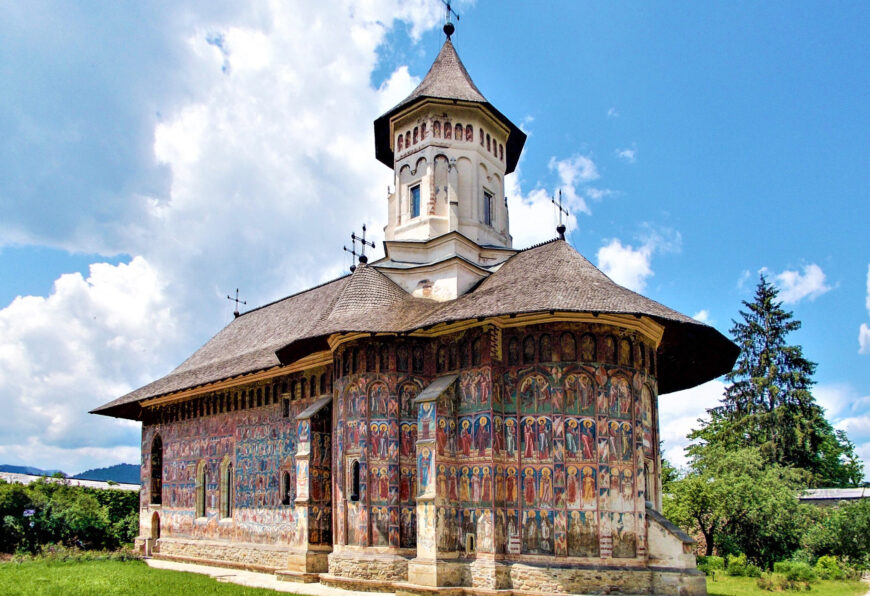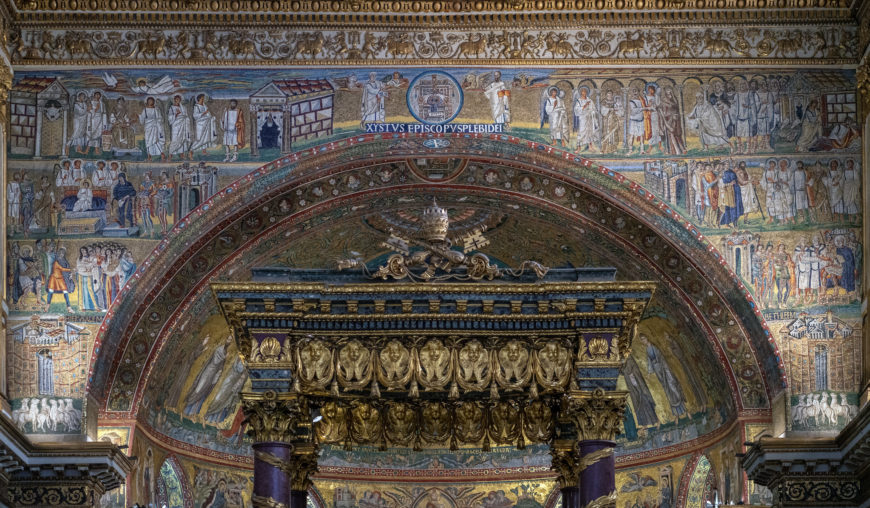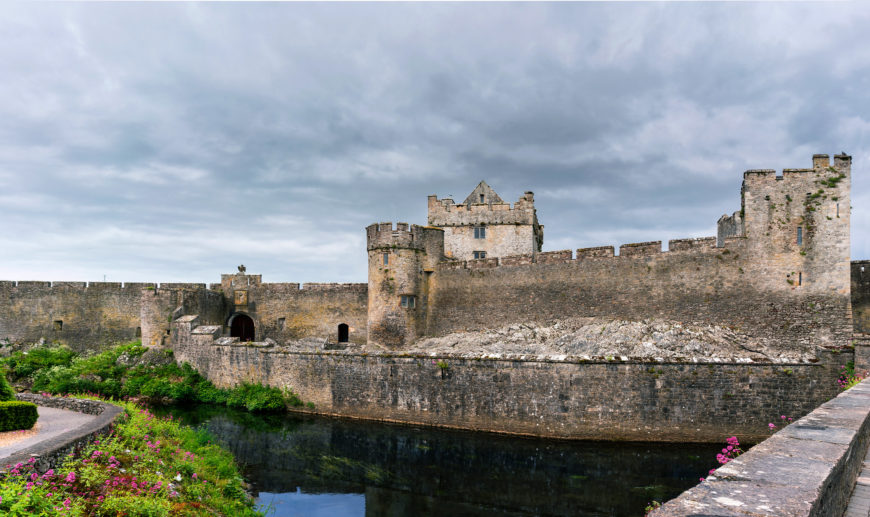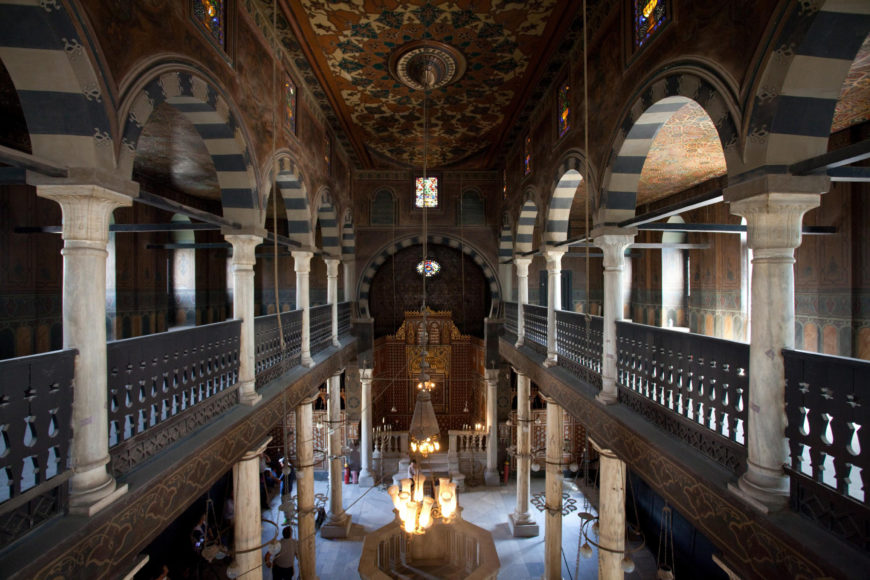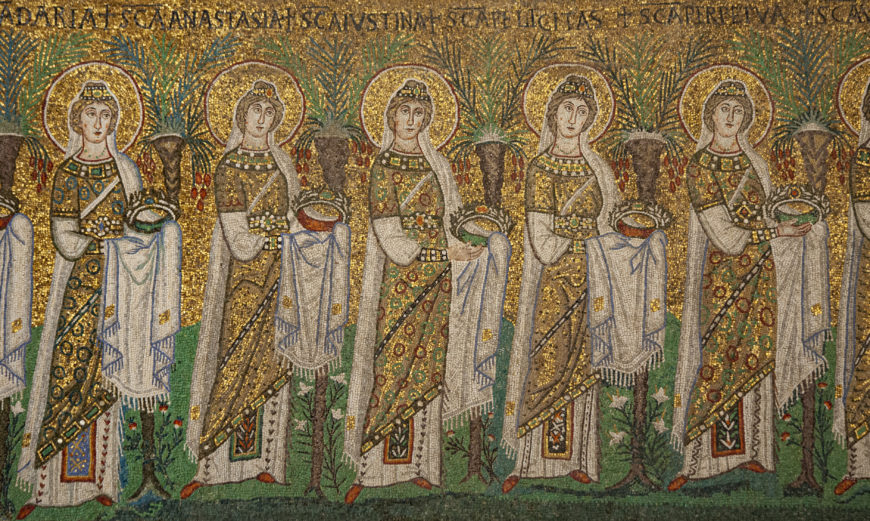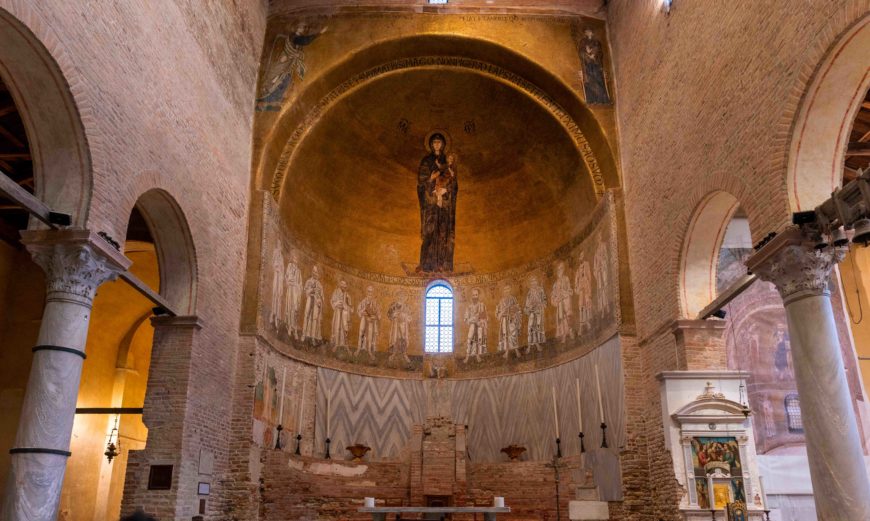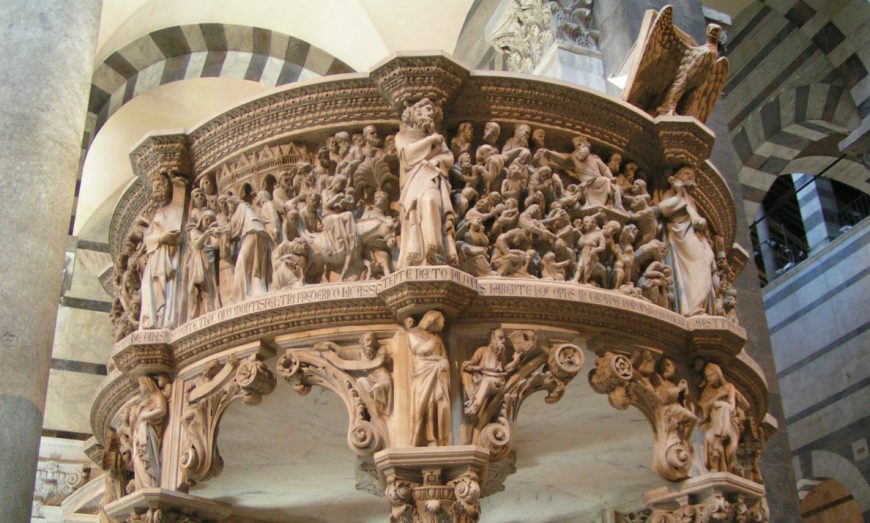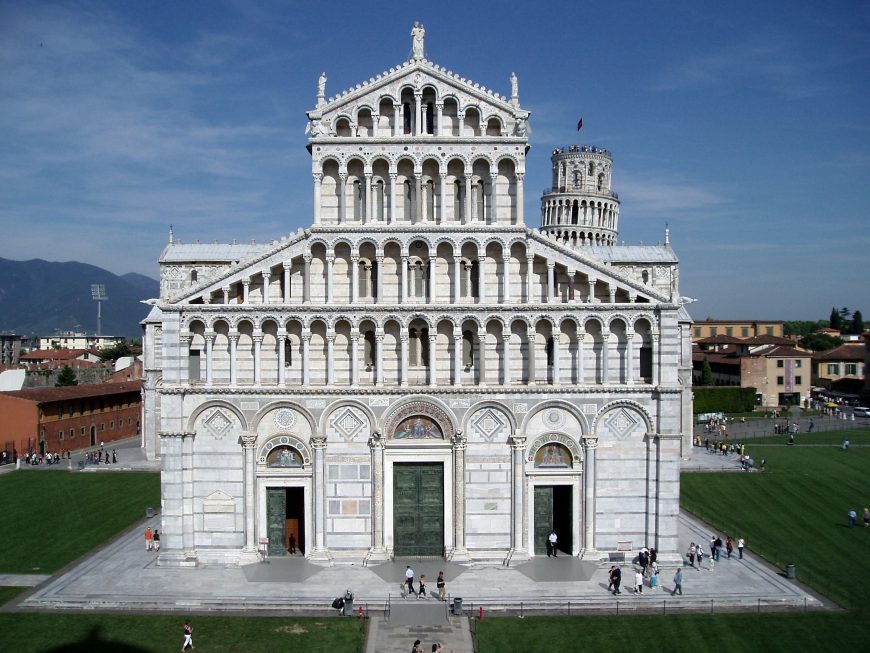Here Christ, represented by the cross, reveals his divine nature to the Apostles—and to the 6th-century worshiper.
Sant’Apollinare in Classe, Ravenna (Italy), c. 533–49 (apse mosaic, 6th century, triumphal arch mosaics, likely c. 7th–12th centuries)
[0:00] [music]
Dr. Beth Harris: [0:04] We’re in the Church of Sant’Apollinare in Classe, just outside of Ravenna. This was once the port for the Roman Empire in the early 1st century.
Dr. Steven Zucker: [0:14] There had once been a large lagoon in between the two towns. That’s long gone. This was actually the site of an ancient Roman cemetery, and there is every possibility that the first bishop of Ravenna, Saint Apollinaris, was actually buried here on this site.
Dr. Harris: [0:28] We see Saint Apollinaris right here in the center of the apse, but before we get to that, let’s talk about the church for a second. We’re in a basilica and like so many churches in Ravenna, it’s been through many phases. Just like Sant’Apollinare Nuovo, there would have been mosaic all along the nave, but those are gone.
Dr. Zucker: [0:48] What we do have is an extraordinary apse mosaic. It’s huge.
Dr. Harris: [0:53] Let’s start with the archway around the apse.
Dr. Zucker: [0:56] That’s known as the triumphal arch.
Dr. Harris: [0:58] In the top center, we see a bearded image of God holding a book, and on either side of him the symbols of the four evangelists.
Dr. Zucker: [1:07] Right. John is an eagle, Matthew is the man, Mark is the lion, and Luke is the ox.
Dr. Harris: [1:13] They’re in a sky filled with blue and red clouds. Below them, we see on the left, the city of Jerusalem, on the right, Bethlehem. From those two very symbolically represented cities, we see lambs emerging.
Dr. Zucker: [1:30] Walking up a mountain, up towards the clouds, up towards Heaven.
Dr. Harris: [1:34] Clearly, a purely symbolic representation, and that continues in the apse mosaic itself.
Dr. Zucker: [1:41] Largest and most central is a gold cross. In the center of the cross, you can see a small bust of Jesus Christ. Surrounding it, is a blue field with 99 gold stars.
Dr. Harris: [1:53] On either edge of the short arm of the cross, we see the Greek letters alpha and omega, the idea that Christ is the beginning and the end, that Christ is all things.
[2:03] What we have symbolically represented here is the story we call the Transfiguration, the moment when Christ revealed his divine nature to three of his apostles—Peter, James, and John. They’re shown here as sheep in a field. Christ is symbolically represented as the cross.
Dr. Zucker: [2:24] On either side, we do see two human figures, half-length representations. One is Moses and one is Elijah.
Dr. Harris: [2:32] In the story of the Transfiguration, when Christ revealed his divine nature and was filled with white light, Moses and Elijah appeared with him. God the Father spoke and said, “This is my son whom I love, with whom I am well pleased. Listen to him.” This is the moment of divine revelation, this appearance of Christ the man as God.
Dr. Zucker: [2:57] It’s so easy to imagine a 6th-century worshipper sitting here, understanding that this is a sort of extraordinary opportunity to have these sacred truths revealed to them as they sit before it.
Dr. Harris: [3:10] The figures of Moses and Elijah in a golden sky in the realm of the eternal. Below, Sant’Apollinare, in a more earthly realm but one represented very schematically and decoratively.
Dr. Zucker: [3:23] Of course, the sheep are wonderful, especially down at the bottom. There are 12 of them, and it’s clearly the reference to the apostles.
Dr. Harris: [3:30] Sant’Apollinare himself stands frontal. We can see his name written on either side of him, just in case we’re going to forget or be confused.
Dr. Zucker: [3:38] That’s right. We can’t do that.
Dr. Harris: [3:39] He’s got his arms raised in prayer, which is actually a position we often see in early Christian imagery.
Dr. Zucker: [3:45] In these churches in Ravenna, we see, here, an apse. In another church, the apse might be missing. We have the mosaics on the walls of the nave, and we can begin to fit together what these churches would have looked like when they were new in the 5th and 6th century.
[4:02] [music]


